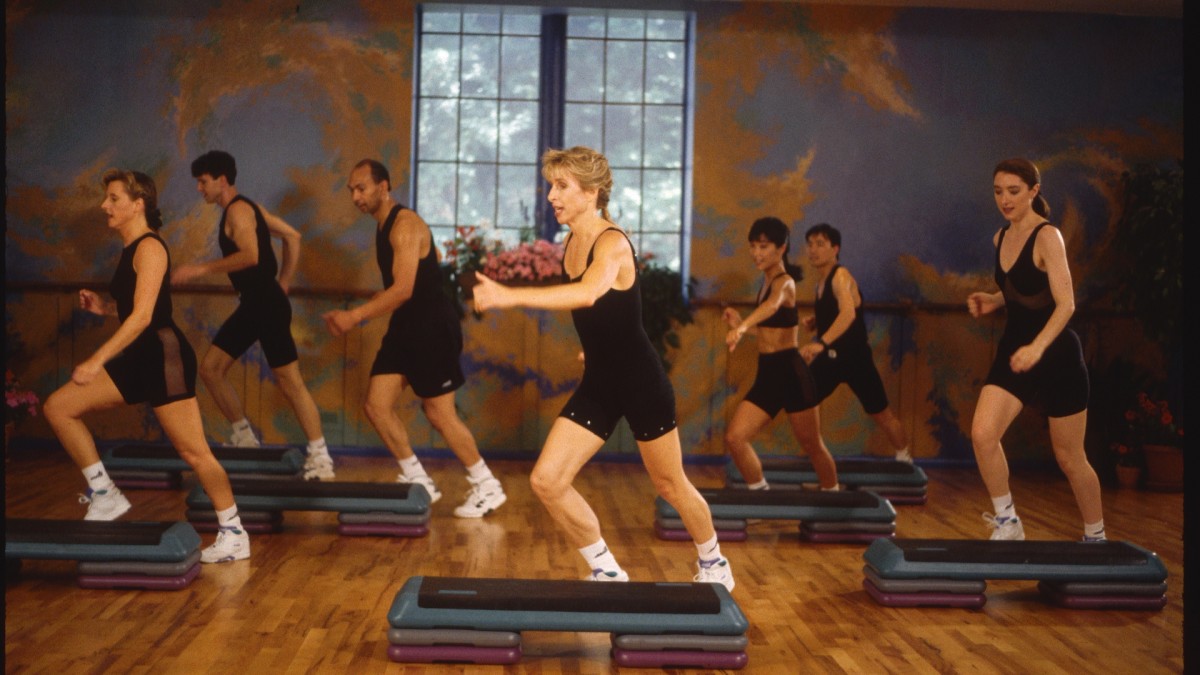Of all the fitness trends that defined the ’80s, step aerobics ruled the home workout scene. While gym bros were busy pumping iron, this was the original way to “get your steps in.” Though step aerobics fizzled out in the early 2000s, it paved the way for today’s group fitness classes—and its influence is still felt in everything from HIIT to dance cardio.
“Step aerobics gave us rhythm and music-based workouts that laid the foundation for contemporary group fitness and working to your true potential,” said Phillip Solomon, a NASM-certified trainer, Barry’s Bootcamp coach, and breakout star from NBC’s hit show Deal or No Deal Island. “Behind the leg warmers and synth-heavy soundtracks, it also laid down some serious groundwork for what we now call high-intensity interval training (HIIT).”
Related: The Posture-Perfecting Press Every Athlete Should Know
Step Aerobics vs Modern HIIT
Anyone who’s ever taken—or taught—a modern workout class knows it’s all about rhythm, pacing, and blending cardio with strength. According to Solomon, today’s fitness giants like Barry’s, SoulCycle, Orangetheory, and F45 owe much of their success to the group fitness boom of the ’80s.
-
Modern HIIT is More Fluid: “HIIT may be based on the reps completed in a certain amount of time, as opposed to just moving continuously until a given piece of music ends,” Solomon says.
-
Step Aerobics Lacked Equipment: For the most part, step aerobics used a raised platform of any kind without the use of other equipment. Contemporary HIIT training utilizes dumbbells, kettlebells, resistance bands, etc.
-
Step Aerobics Was Higher Energy: Step aerobics called for a “higher energy endurance that could be described as ‘level 7-8 consistently’ for an hour, whereas modern-day HIIT training has more peaks and valleys, getting you to a ‘level 9-10’ intensity for smaller intervals of time,” Solomon says.
-
They Have Different Purposes: “HIIT intentionally spikes and lowers heart rate in short bursts, improving both aerobic and anaerobic capacity while training the heart to recover more efficiently,” Solomon says, adding that both methods boost cardiovascular fitness, just with different rhythms and intensities.
The Step Aerobics Blueprint Behind HIIT
Step aerobics may seem outdated to athletes today, but it laid the groundwork for HIIT as we know it. With tempo-driven, full-body movements that pushed participants physically and mentally, these workouts delivered serious sweat and calorie burn—all in under an hour.
“Most importantly, however, it was one of the first types of training that brought joy and fun back to fitness,” Solomon says. “Getting to work out to your favorite song, or fall in love with the energy of an instructor, or even bring a friend to experience that electric energy—that is what truly changed the game.”
